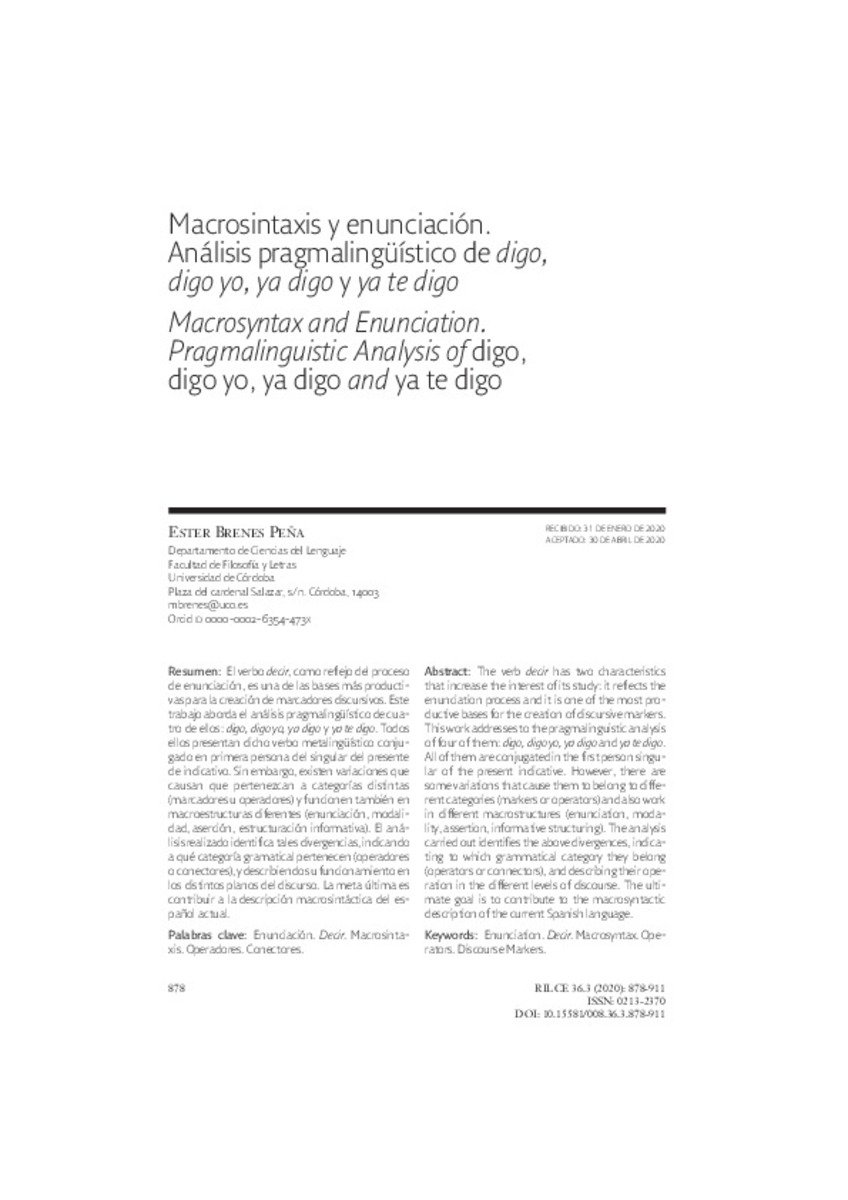Macrosintaxis y enunciación. Análisis pragmalingüístico de «digo», «digo yo», «ya digo» y «ya te digo»
Otros títulos :
Macrosyntax and Enunciation. Pragmalinguistic Análisis of «digo», «digo yo», «ya digo» and «ya te digo»
Palabras clave :
Enunciación
Vervo decir
Macrosintaxis
Operadores
Conectores
Fecha de publicación :
2020
Editorial :
Servicio de Publicaciones de la Universidad de Navarra
Cita:
Brenes-Peña, E. (Ester). "Macrosintaxis y enunciación. Análisis pragmalingüístico de «digo», «digo yo», «ya digo» y «ya te digo»". Rilce: Revista de Filología Hispánica. 36 (3), 2020, 878 - 911
Aparece en las colecciones:
Estadísticas e impacto
0 citas en

0 citas en

Los ítems de Dadun están protegidos por copyright, con todos los derechos reservados, a menos que se indique lo contrario.








